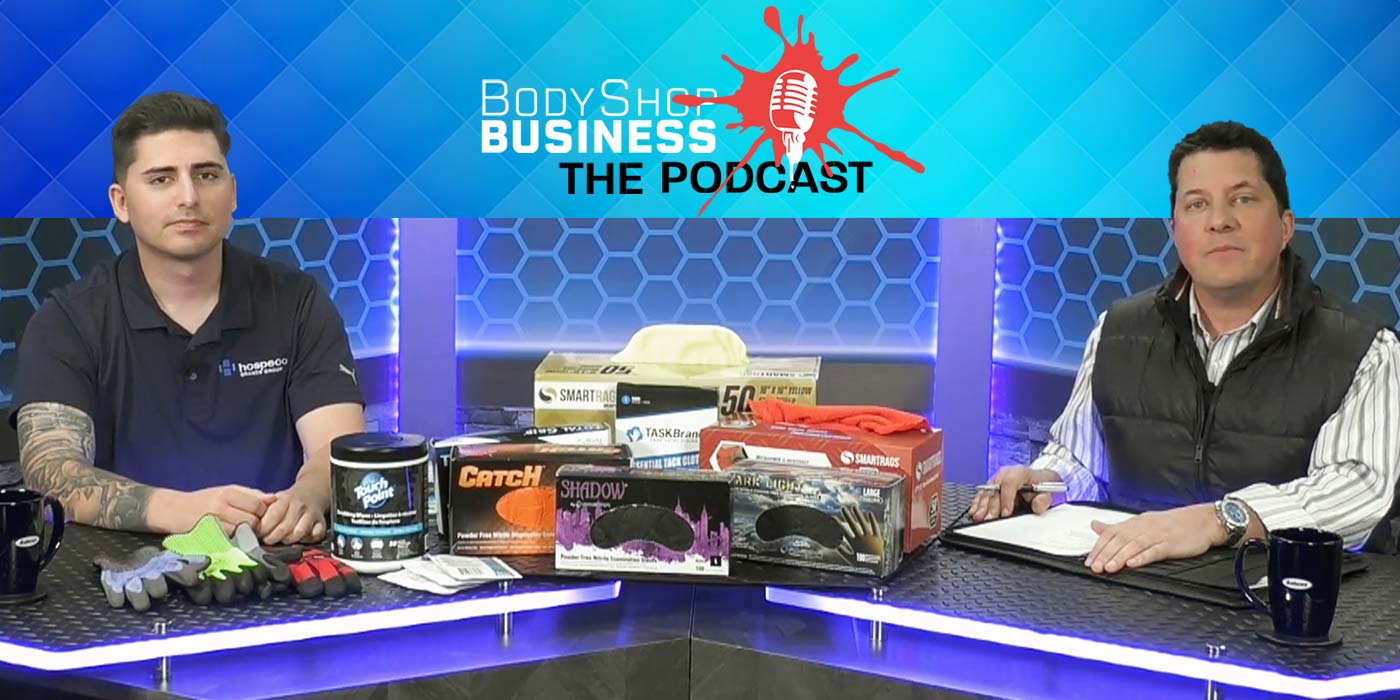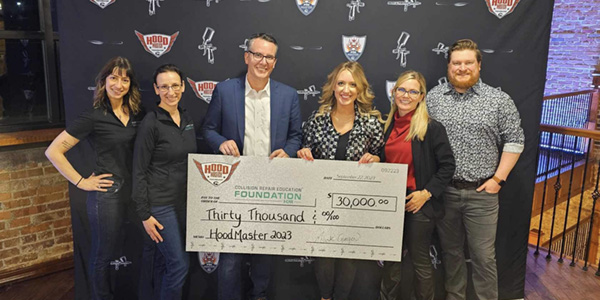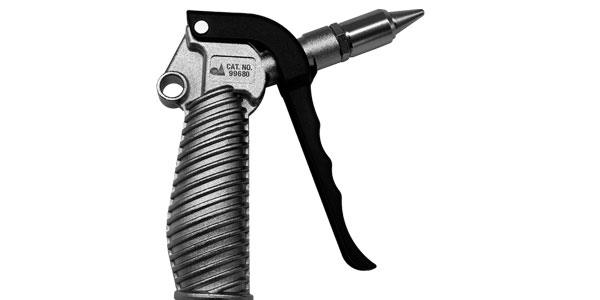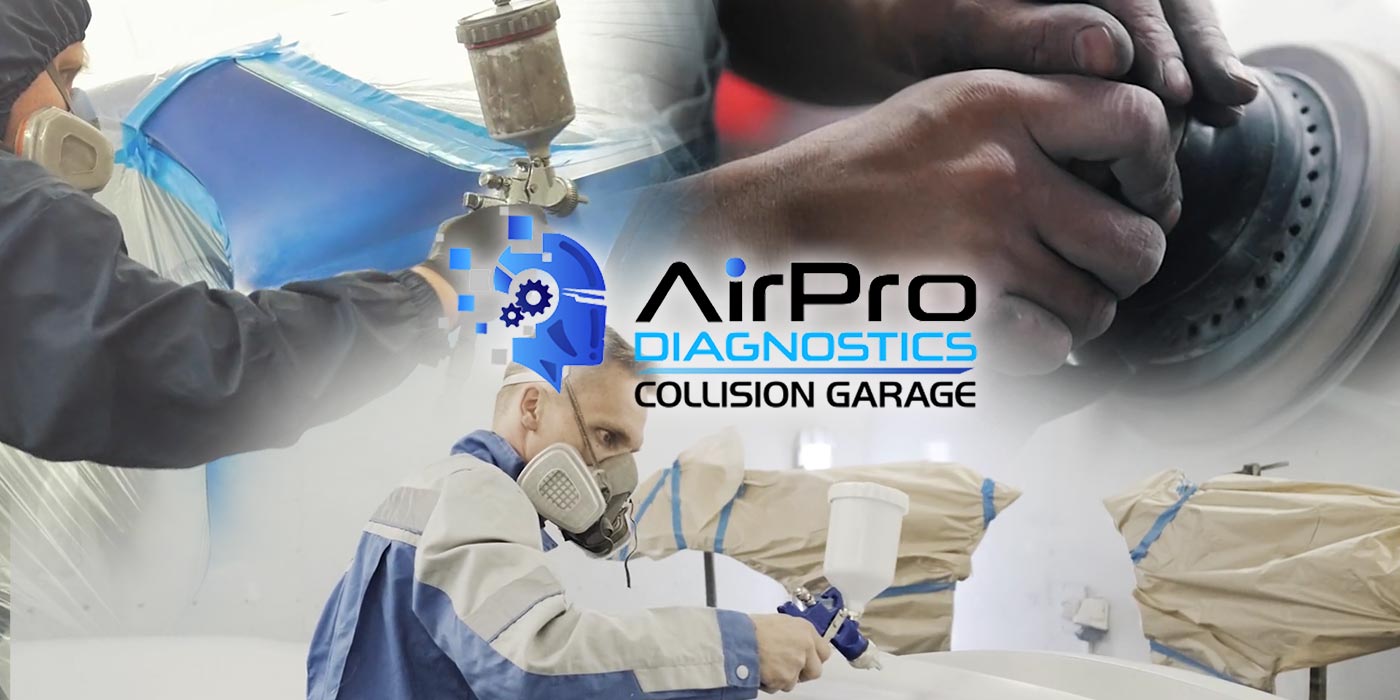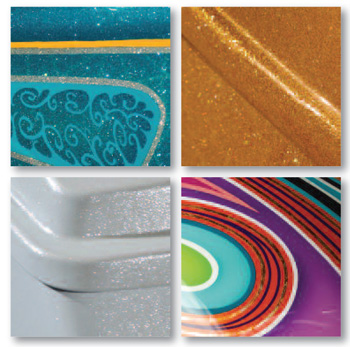 Retelling all these moldy tales of body shop yesteryear each month is a firm reminder that I’ve been around for a long, long time. But I try hard to remember that I’m still around because our business continues to change in interesting and challenging ways every year. Color effects are a key component of new car sales, and each dazzling new showroom finish must be refinished invisibly in our shops.
Retelling all these moldy tales of body shop yesteryear each month is a firm reminder that I’ve been around for a long, long time. But I try hard to remember that I’m still around because our business continues to change in interesting and challenging ways every year. Color effects are a key component of new car sales, and each dazzling new showroom finish must be refinished invisibly in our shops.
Adding Some Sparkle
From the first flakes added to auto paint in the 1930s (which were remnants from aluminum roof coatings) to the latest aluminum-coated micas, sparkle sells cars. Automotive color stylists spend all their time trying to create color effects that cause consumers to say, “I gotta have that.”
The first aluminum flakes were irregularly shaped chunks; the next evolution was to cut the aluminum into precise and uniform sizes. The next jump was to use something that both reflected and transmitted light.
Mica is a silicate that appears in a layered texture, meaning it reflects and passes some light. The next generation of sparkle was coated micas, which duplicate the multi-color optical effect of pearls and the inside of seashells. The type of powder coatings and the number of coats around the mica chip determine the exact color change and effect. Xyrillic flakes attach a metal layer to the mica chips and provide even more reflection and more dramatic color change when coated with layers of titanium dioxide (TiO2).
After many years of talking about it, the car manufacturers are soon introducing the next evolution in sparkle: glass spheres. Look for them in the finishes on 2016 and 2017 models. While they occupy the same color space as current reflectants, glass reflects and refracts light like a prism; by breaking the light into individual colored bands, they offer striking color effects. Certain colors reflect better than others, and bigger balls of glass will reflect more light of any hue. Plating the glass spheres with metal and adding powdered coatings will no doubt follow shortly and be even more unique.
Candies and Pearls
Originally the province of custom painters, three-stage finishes made their way into new car showrooms in yet another effort to find the “I gotta have that” difference. Using a ground coat and a translucent mid-coat followed by a topcoat clear allowed the base to show through the tinted coats and give the finish the same depth and interest as a carnival candy apple. Including coated mica chips in the mid-coats imitated the seashell look.
Ford’s Ruby Red is a candy color that looks great on the showroom floor and often gives the paint shop fits. Heads up, folks, as word has it Ford is working on a similar blue candy and Nissan is on the trail of green and purple OE three-stage candy finishes. I predict it won’t be long before we see the combination of coated glass flakes inside a tinted mid-coat for a color changing, sparkly, jewel-like finish.
As always, refinishing a vehicle with a translucent mid-coat of any kind will require the painter to make a let-down panel with one, two or three or more coats of the mid-coat over one, two or three coats of base to find the exact match. For sure, the OE put one or two passes of the mid-coat on the vehicle during production. Matching your shop’s unique paint guns and your particular painter’s techniques to the factory’s robotic application is the trick.
Seeing Clearly
The original equipment millage (thickness) of the various ground coats and mid-coats is as thin as possible to preserve flexibility, and the finish’s depth comes from the clearcoats. When a reflecting flake is involved, the clear has to be applied densely enough to cover up the tallest flake. Automotive sparkle comes in sizes from about 10 microns to 80 microns; anything over 60 microns is tough to cover up.
One pipe dream that continues to hover around our industry is the one-coat refinish clear. While it’s chemically possible to pack enough solids into a clear resin to do it, the application has to be perfect. Few painters or paint booths are perfect (you and yours being the exception, of course). A second coat of clear makes it easier for regular painters to flow out and smooth the finish. And if your shop cuts and buffs everything, make sure to apply another coat to be fed to the polisher. Low film build is the No. 1 cause of clear failure.
Matte clears are currently a hot item. Originally on high-dollar cars like Lamborghini, BMW and Mercedes-Benz, they’re now appearing on something as common as a Hyundai Veloster. There are several gloss levels in production, and the paint shop will have to know which one was OE on the vehicle. Plus, those pesky OE color stylists want all kinds of trick stuff in their low-gloss clears. The clear’s gloss is reduced by the addition of silica flattening agents, which can give the clear a chalky sidetone. They don’t want any milkiness on the side tone (flop), and they want to see the basecoat’s sparkle through the matte clear. More clever chemistry from the paint manufacturers will soon provide matte clears offering both gloss levels and clarities. How about one that has no gloss but is perfectly transparent? Coming soon.
It’s a Wrap
Will our refinish business disappear if vehicle wraps get better and better? I don’t think so, but wraps are certainly improving. Vinyl films that will stretch to all the convex and concave contours on a swoopy car body without pulling the printed designs out of shape are right on the horizon. Currently, the applicator makes the film fit by heating, pulling and stretching it to contour, often distorting the design.
Also coming are thinner and thinner films with clever technology that allow air bubbles to pass up through the film rather than having to be squeegeed to the nearest edge. All these will make wrap applications much easier. Using a dual roller system, the wrap-making printer can bond a layer of clear over the design for a gloss similar to a paint finish. While our refinish industry focuses on new paint color effects, the vinyl, plastic, nano technology folks are making films that will wrap onto anything smoothly without distortion and will also offer some cool visual effects. And if the showroom consumer says “gotta have that,” future collision repair may well include repairing a wrapped auto.
Change Is Certain
Unique sparkles, color changing pigments, mile-deep clears and no-gloss clears promise to make the next decade in auto body even more challenging than the last. After 44 years in our business, I predict we’ll take it all in stride.
Paint companies will produce the very thing to repair the OEM finishes, PBE jobbers will explain the equipment and techniques necessary to apply them and, as always, the line painters will figure out how to make it work perfectly. The only thing certain is change, and I can hardly wait to see the latest, coolest paint job yet.
Mark R. Clark is the owner of Professional PBE Systems in Waterloo, Iowa; he is a well-known industry speaker and consultant. He is celebrating his 26th year as a contributing editor to BodyShop Business.










